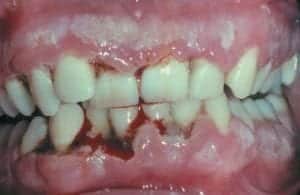Funtabulously Frivolous Friday Five 164
Just when you thought your brain could unwind on a Friday, you realise that it would rather be challenged with some good old fashioned medical trivia FFFF, introducing the Funtabulously Frivolous Friday Five 164
Question 1
Prior to penicillin what was syphilis treated with? Clue: this was the first “magic bullet”.
Reveal the funtabulous answer
Arsenic
Paul Ehrlich (a German Physician) and Sahachiro Hata (a Japanese bacteriologist) were looking for a cure against syphilis. They finally found success with the 606th compound in their series of experiments, dioxy-diamino-arsenobenzol-dihydrochloride, which they called drug “606” and which is now known as arsphenamine. Talk about perseverance.
In 1910 Ehrlich and Hata announced their discovery at the Congress for Internal Medicine at Wiesbaden. This led to its manufacture by a German chemical company, Hoechst, as Salvarsan, “the arsenic that saves lives”, and it soon also became popularly known as “the magic bullet”
Question 2
What is Vincent Angina?
Reveal the funtabulous answer
Ulcero-membraneous pharyngitis and tonsillitis from a fusospirochetal infection.
Described an the French physician Jean Hyacinthe Vincent. This condition only involves the tonsils and pharynx. Not to be confused with necrotizing ulcerative gingivitis (NUG) which involves the gums, colloquial named “trench mouth” due to many of the World War I soldiers developing this condition secondary to malnutrition and smoking.
Symptoms include pain, ulceration and bleeding in the areas affected
- Plaut HC. Studien zur bacteriellen Diagnostik der Diphtherie und der Anginen. Deutsche Medizinische Wochenschrift, 1894; 20: 920-3
- Vincent JH. Sur l’étiologie et sur les lésions anatomo-pathologiques de la pourriture d’hôpital. Annales de l’Institut Pasteur, 1896; 10: 488-510
- Van Cauwenberge P. “[Significance of the fusospirillum complex (Plaut-Vincent angina)]”. Acta Otorhinolaryngol Belg (in Dutch). 1976; 30(3): 334–45.
Question 3
Who invented the CT scanner?
Reveal the funtabulous answer
Godfrey Hounsfield (1919-2004) and Allan MacLeod Cormack (1924-1998)
While on an outing in the country, Hounsfield came up with the idea that one could determine what was inside a box by taking X-ray readings at all angles around the object.
He then set to work constructing a computer that could take input from X-rays at various angles to create an image of the object in “slices”. Hounsfield built a prototype head scanner and tested it first on a preserved human brain, then on a fresh cow brain from a butcher shop, and later on himself. His team later used Cormack’s theoretical calculations to modify the scanner as we know it today. [Reference]
Hounsfield’s name has become immortalised with the Hounsfield scale, a quantitative scale of radio-density
Question 4
Who gets Satchmo Syndrome?
Reveal the funtabulous answer
Wind or brass players, most commonly trumpeters who get a rupture of the obucularis oris muscle.
The symptoms can include loss of endurance, loss of range and control of tone, diminished accuracy, and fatigue in the embouchure. To return to their instruments, musicians who suffer with Satchmo’s Syndrome must undergo surgery and then rest for a significant amount of time afterward. [Reference]
After forcing legend Louis Armstrong to put down his instrument for a year, Satchmo’s Syndrome was named after him. Louis Armstrong was nicknamed Satchmo (short for “Satchel mouth”).
Question 5
What are Southey tubes and what are they used for?
Reveal the funtabulous answer
Small cannulae with an inner trocar that were inserted subcutaneously to allow the egress of edema in terminal cases of dropsy (heart failure) or anasarca.
Southey tubes were invented by English physician Reginald Southey (183-1899).
This apparently provided considerable symptomatic relief. Southey tubes fell by the wayside with the widespread use of diuretics.
- Southey R. Traitement de l’anasarque générale par une drainage capillaire. Comptes Rendus de l’Association Française pour l’Avancement des Sciences. Session 6 (Le Havre, 1877). Paris, 1878: 856-860.
- Walsh AC. Intractable Congestive Heart Failure Successfully Treated with Southey Tubes. Can Med Assoc J. 1964 Jun 13; 90(24): 1375–1376.
Southey was a friend of Charles Lutwidge Dodgson (aka Lewis Carroll) who took this photo of the doctor


FFFF
Funtabulously Frivolous Friday Five
Dr Neil Long BMBS FACEM FRCEM FRCPC. Emergency Physician at Kelowna hospital, British Columbia. Loves the misery of alpine climbing and working in austere environments (namely tertiary trauma centres). Supporter of FOAMed, lifelong education and trying to find that elusive peak performance.

